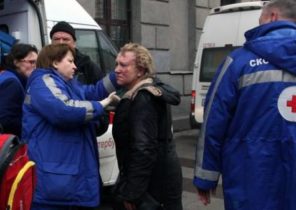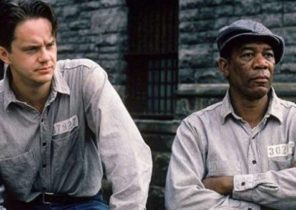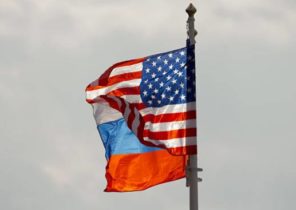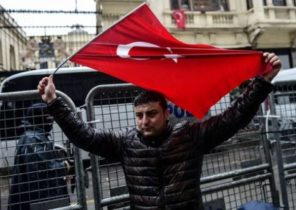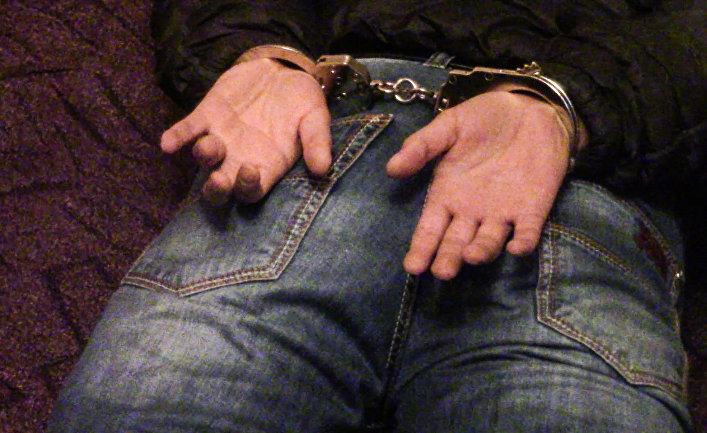
The terrorist attacks of recent years have shown that although the perpetrator acts alone, he often has assistants, he is associated with the network of supporters and a long time planning the attack.
The next day after Mohamed Lower-Bulil (Mohammed Lahouaiej-Bouhlel) killed 84 people and wounded more than 400, sending his truck into a crowd in nice in July, interior Minister Bernard Cazeneuve (Bernhard Cazeneuve) declared that Lower-Bolel “very quickly underwent radicalization”. Bulla was described as mentally unstable, the neighbors told me that he drank alcohol and ate pork, and therefore could hardly be Islamic extremists.
However, during the nearly six months that have passed since that day, the image of the mass murderer completely changed. On suspicion in connection with this case arrested a number of persons, and the French police said that Bolel communicated with jihadists had planned the attack for over a year, with the entire network.
Lone wolves are not lonely
Bolel not unique. The history of terrorists take a more definite form after a long time, when through investigation and questioning new information arises. And then it turns out that those who initially described as “lone wolves”, actually these are rare.
“There are very few examples of jihadist attacks carried out absolutely no one associated with people, they do very little,” says Petter Nesser (Petter Nesser) senior researcher, research Institute of the Norwegian Armed forces.
Often to establish a network of contacts of terrorists, it takes a long time, says Nasser. And public attention has long moved on to something else, and deceptive representations can remain in our memory forever.
“This problem occurs again and again. Their relationship is less visible than previously, because the terrorists often communicate in social media or in encrypted platforms. For the reconstruction of the radicalization process takes time,” says Nesser.
Alone do not become terrorists
There are practically no people who would become terrorists without any form of contact with others, says Scott Stewart (Scott Stewart), Vice-President of the geopolitical analytical center Stratfor in Texas responsible for analysis of tactics.
“Cases when someone becomes a radical in vacuum, very rare,” says Stewart in an interview with Aftenposten.
As an example, he cites the story of Hassan Nidal (Nidal Hasan) shot dead 13 people at a military base in the U.S. in 2009. First, the Nidal said as a person with a mental disorder in the American media even started a discussion about, and whether the incident generally called terror. Later it turned out that Nidal via email communicated with a known jihadist.
“The FBI knew all along that he had this contact, but the public found out about it much later. It was an obvious attack, and the authorities was a mistake not to classify the incident that way from the beginning,” says Stewart.
Single attack — a new tactic
Nasser cites as a classic example of Mohamed (Mohamed Merah). In 2012, As one week was killed in the South of France seven, including three children from a Jewish school. In the end, he himself was liquidated by the police in the operation that lasted 19 hours.
“At first it was described as a lone wolf. It took a long time before it became clear the extent of his jihadist network it May take years before we know what happened actually, there is nothing unusual,” — said Nasser.
The first terrorist attacks in Paris and Brussels, which was a network of ISIS (a terrorist organization banned in Russia — approx. ed.), long considered the unsuccessful attempts made lone wolf, Only a few years after the terrorist attacks in Brussels at Easter last year, it became clear the scale of the network.
Nasser says that the ISIL terrorist attacks follow a known pattern, but that the organization increasingly uses what he calls “individual terror”:
“The fact that to carry out coordinated attacks involving many people, becomes more difficult, so that they use individuals, this is a tactical choice. In most cases there is a connection with a network of contacts, there are instructions, but the intensity of these relationships and the ways in which controlled by the terrorists, vary,” — said Nasser.
Political problem
Many experts on terrorism would never use the term “lone wolf”. Some say it glorifies violence, while others argue that it is misleading.
“I this term is not used, because it is misleading. I call it “folk jihadism,” says Stewart.
It is a conscious and deliberate form of resistance without a leader, which developed in terrorist organizations, says U.S. expert.
Nasser believes that investigators and intelligence know of the danger and to give some characteristics of criminals too early.
“They know that the process can take that picture could change. But for politicians and society as a whole is a problem, because the political priorities of countermeasures can be based on incorrect postulates”, — said Nasser.
“The very idea of the existence of lone wolves gives the impression of utter unpredictability. This can lead to the fact that emphasis will be placed on preventive measures of another type than those that would be most effective in the fight against controlled and organized networking”.
Over the weekend, ISIL claimed responsibility for the attack in Istanbul, where the offender is still at large. ISIL took responsibility for the attack in Berlin, before the terrorist was killed in Italy. Previously, the organization declared its responsibility for the terrorist attack in Brussels, Orlando and nice, but also a number of less “successful” by the standards of terrorists, terrorist acts; in particular, two in Germany, two in USA and one in Canada.
Nasser believes that the organization will cease to trust if she is going to take responsibility for something that is irrelevant.
“There are different theories about the fact that they have a whole system on how to take responsibility. I was under the impression that they are in a very small extent take or never take responsibility for anything that they can’t be connected”, — says Nasser.
Stewart shares the view that, when ISIS says was behind the attack, she was really connected to him.
“We have not seen that they took responsibility for something for no reason. If they say they take responsibility, then they are either behind the attack or was it inspired. Often they had direct contact with the offender,” says Stewart.
Four of the attack — and later investigation showed
The attack in würzburg
Main character: Riaz Khan Ahmadzai (Riaz Khan Ahmadzai)/ Mohammed Riyadh (Riyadh Mohammed)
What happened: a 17-year-old asylum seeker from Afghanistan was attacked with an ax and a knife at passengers on the train. Four people were seriously injured. Was shot by police.
What it turned out: Ahmadzai took some video, which swears allegiance to ISIS. A terrorist organization that published it later. There he is called Mohammed Riyadh. There is no certainty that his personality was genuine, maybe he was older and was from another country. According to the Financial Times, and the Ahmadzai and Dalal (see below) was controlled by ISIS with the help of contacts in the Internet. Mentor Ahmadzai suggested that he crashed the car into the crowd, as Bolel did it in nice, but the terrorist said he did not know how to drive. “You should learn. Then it is possible to cause much more damage,” wrote the coach. Ahmadzai said that he would Board the train and attack the first passengers, which will see wrote FT.
The attack in Ansbach
Main character: Mohammed Dalil (Mohammad Daleel)
What happened: Dalil blew himself up at a music festival in the German city in July last year. First wrote about it as about desperate asylum seeker.
What transpired later: the ISIS writes in the magazine “al-Nabaa”, Dalil long before the attack were in contact with the so-called “mentor” and that it took him three months to make an explosive device. Subsequently, the investigation confirmed that “direct contact” had taken place, said the interior Minister of Bavaria Joachim Herrmann, quoted by Der Spiegel.
The attack in Magnanville
Main character: Larossi of Abbala (Larossi Abballa)
What happened: Abbala attacked a man and a woman, were both police officers in front of their home in Magnanville in France. Before the police shot him, he killed them both with a knife.
What it turned out: On suspicion of involvement in the attack and membership of a terrorist organization were arrested two people. In December, he was arrested three people they suspected of having links with the cell.
The investigation found, in particular, that of Abbella talked with the leaders of ISIS via encrypted e-mail messages.
The attack in nice
The protagonist: Mohamed Lower-Bulil (Mohammed Lahouaiej-Bouhlel)
What happened: Lower-Bolel drove into a crowd of people on the promenade des Anglais in nice in July 2016. Thousands of people gathered on the waterfront to watch the fireworks on the occasion of Bastille Day, the National day of France. He killed 86 people, more than 400 were injured. Then the police shot him.
In the first days after the attack, it was stressed that Bulela had problems with mental health. It was described as not very religious person, police sources hinted that it could make an extremist within a few weeks.
What it turned out: French police and investigators believe that Bolel planned the attack for more than a year, and that he was radicalized long ago. Boolell often communicated with one jihadi after the terrorist attack against the magazine Charlie Hebdo in early 2015. In the summer of 2015 Bugel was detained on the border with Italy in the car, along with three other men, one of whom was known for jihadi-related terrorist network in Syria, according to French TV channel BFM TV.
They also think that helped him. While in connection with the attack are suspected of nine people. Three of them were arrested on Christmas eve, when the French police arrested 11 people in nice and Nantes. Eight of them were released soon.
